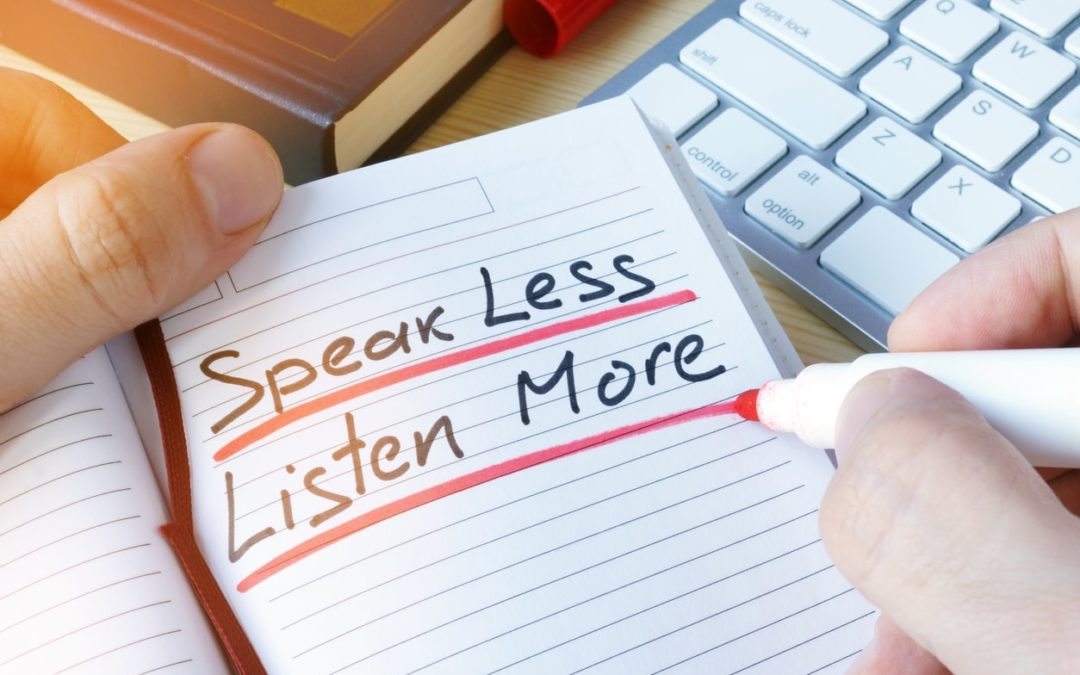When we think about communication, we often focus on what we want to say, our delivery, and engaging or influencing others. We may even set aside time to rehearse our key messages for important meetings.
Yet to be truly effective, we also need to consider how we will listen.
Communicating is a delicate dance between the messenger and receiver, and sometimes it’s necessary to tone down our innate tendencies to improve the dialogue and interaction. In their book, The New Art of Managing People, Phil Hunsaker and Tony Alessandra highlighted that:
“The amount of the time we are distracted, preoccupied or forgetful when listening is 75 percent.”
75% not listening is surprising until you think about all the times you felt misunderstood.
Sharpening your listening skills takes practice, just as preparing for a presentation does. There are several types of listening categories cited in this article from Simplicable. Here I focus on active and reflective listening as two productive ways to demonstrate your interest and respect regarding what others have to say.
In active listening, you focus on what’s being said, not interpreting.
In their book, How to Study in College, Walter Pauk and Ross Owens introduced Triple-A-Listening for students to consider when attending classes and lectures. The “Triple A’s” are Attitude, Attention, and Adjustment and are centered on hearing and responding to what the other person is saying.
These three tenets apply to any general exchange or meeting:
Attitude.
A positive, open-minded attitude means joining a conversation agenda-, bias-, and distraction-free so you can devote your attention to what is being shared. But that’s just the start. Maintaining a constructive attitude takes discipline and the desire to honor different perspectives, viewpoints, and styles.
Attention.
Offering your undivided attention to another means limiting distractions. During your time together, you concentrate on and process what the other person is saying. You’re joining the dialogue as your whole self – mind, body, and heart. If you find yourself thinking about what you’ll say, you’re not fully listening.
Adjustment.
In active listening, you wait to respond until after the other person has finished talking. If the discussion doesn’t go the way you anticipated, you may need to ask questions to clarify or pivot directions based on your new level of understanding.
Reflective listening is an excellent technique for difficult conversations.
Here, you allow someone to communicate their honest opinions and ideas without judgment. Like “Adjustment” above, you’re summarizing what you heard the other person express to confirm that you took away the key messages they wanted you to know. During this process, you may be taking notes of points to discuss later. Still, you’re silent during their process of sharing, meaning you’re not interrupting with any inquiries or advising with your thoughts or experiences.
We crave to be seen, heard, and appreciated as human beings.
Establishing a safe space for courageous communication can go a long way to connecting with people. We all experience interactions differently and bring with us inherent biases and conditioned behaviors we’ve learned along the way. The more we let go of these personal aspects, the more open we can be. Here are some additional ways to boost your presence and communication aptitude.
Activate your best with those around you.
When you’re in a healthy state of mind and self-led, you’ll participate more positively. To learn more about yourself and strengthen team dynamics, you can use the MBTI®, FIRO® Business, or iEQ9 Assessments as the foundation for professional development and learning. My approach is personalized and customized. Each leader takes the self-assessment, receives a 90-minute virtual coaching session, and participates in a virtual team workshop based on the scope of focus and learnings. Schedule a free call with me to learn more.

